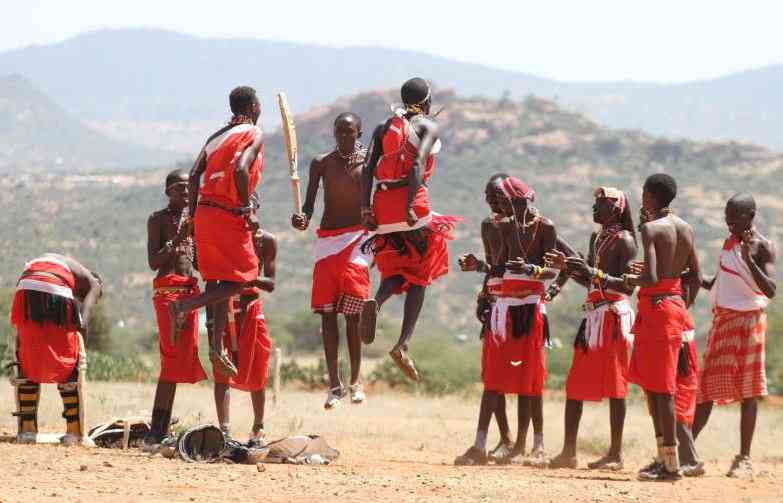
Our elections have caused much noise in global news media outlets. We are indeed a major player on the African stage, and subsequently that of the world.
We have the largest economy in East Africa, as well as a major port in East Africa, Mombasa, which is the main trade gateway to the east and central African region.
Our citizens have contributed greatly to the globe not just because of our economic standing but because of the uniqueness of our people's character and their talents.
Kenya was home to the first black woman in history to ever win a Nobel Peace Prize, as Wangari Maathai's heroics as a social and environmental activist rightfully earned her a place among the world's most admirable.
Kenya's athletes are global giants, and renowned for their fitness, endurance, tenacity, and humility. Kenya has the most Olympic medals of any African country with 35 Gold medals to date, eight more than our nearest competitors, South Africa. But this country has also been a player in the global stage even far back in the past.
East Africa has long been a part of intercontinental trading routes with the outside world. In Roman times, all of the coast from what is now northern Kenya to Mozambique was known as Azania to the Romans.
Cushitic people, the ancestors of modern-day Somalis, Rendiles, Oromos and other Cushitic tribes once inhabited this land before the Bantu and Nilotic migrations, and it was they who interacted with the ancient civilisations of Greece and Rome, providing them with ivory. In the first millennium BC, all of the coastal lands of ancient Azania moved hands from Cushitic peoples to Bantu people.
It was these people who first began trading with the Arabs in the first century BC, and it was these people who established communities, villages, and then the cities that would turn into Gede, Lamu, Mombasa, Malindi and Pate Island.
- How the Swahili influenced music, art and culture
- Literary retreat in the Mara
- Wildebeest migration: Proposed 'safari commandments'
- Colour, song and dance as Maa Cultural Festival kicks off in Masai Mara
Keep Reading
After centuries of trade and intermingling with Arab and Persian sailors and merchants, a new language emerged, Swahili, which would later become the lingua franca of all eastern and central Africa.
The Swahili civilisation was a central cog in the Indian ocean trade between Asia, the Indian subcontinent, and the Middle East.
People as far off as China sailed to Kenya's shores before European navigators managed to circle the African continent.
In an archaeological dig conducted by Peking University in China and the National Museums of Kenya between 2010 and 2013, porcelain fragments as old as the 9th Century have been found as a result of an intercontinental trade between the Chinese and Swahili states.
Between 1405 and 1433 the legendary Chinese explorer and mariner Zheng travelled from China to Malindi, with a fleet of 300 giant treasure ships and 30,000 chinese soldiers.
Sarah Zeilinski, editor of the American magazine Science News writes that "during the fourth expedition, which left China in 1413, part of the fleet led by commander Zheng He sailed to Bengal in India, where in 1414 they met envoys from the African coastal state of Malindi (now part of Kenya).
"The men from Malindi had brought with them as tribute giraffes, and they gave one of those giraffes to the Chinese, who took it home. A year later, Malindi sent another giraffe to China, along with a zebra and an oryx."
There is an ancient Chinese painting of that very giraffe which still survives to this day.
But it was not just the Swahili who were well known globally throughout history. Certain Kenyan communities and tribes in the interior of the country have left a mark on cultures far away from our shores.
The Maasai are not just famous today for their vibrant traditions and warrior culture but were equally infamous in precolonial times and feared by the Arabs who traded with the Swahili.
The Maasai were such a fearsome warrior culture that they deterred the Arab and Swahili slave traders from venturing into the Kenyan mainland in search of slaves, thus saving many of our ancestors from the grim fate of chattel slavery in Arab societies.
Arab and Swahili caravans Journeying to the Buganda Kingdom were often totally annihilated by regiments of moran, and W R Ole Ntimama writes that the Maasai forced 'slave catchers' caravans to find an alternative route to Uganda by making it dangerous for them to pass through Kenya'.
The Akamba community also has a global footprint. In the precolonial era they traded directly with the Swahili and the Portuguese at the coast, providing ivory and slaves without Arab or Swahili middlemen.
Subsequently, 250 Akamba were transported as slaves by Portuguese or Spanish slave traders from the Kenyan coast to Paraguay, where they were promptly freed and made soldiers, due to their archery skills.
In 1820, they accompanied the Spanish general Jose Gervasio Artigas into exile in Paraguay after Uruguay gained independence from Spain.
 The Standard Group Plc is a multi-media organization with investments in media
platforms spanning newspaper print
operations, television, radio broadcasting, digital and online services. The
Standard Group is recognized as a
leading multi-media house in Kenya with a key influence in matters of national and
international interest.
The Standard Group Plc is a multi-media organization with investments in media
platforms spanning newspaper print
operations, television, radio broadcasting, digital and online services. The
Standard Group is recognized as a
leading multi-media house in Kenya with a key influence in matters of national and
international interest.









